


JUNE • VOL. 6 • SERIES OF 2022
INSIGHTS is a monthly publication of BDB LAW to inform, update and provide perspectives to our clients and readers on significant tax-related court decisions and regulatory issuances (includes BIR, SEC, BSP, and various government agencies).
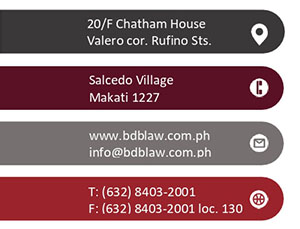
DISCLAIMER: The contents of this Insights are summaries of selected issuances from various government agencies, Court decisions, and articles written by our experts. They are intended for guidance only and as such should not be regarded as a substitute for professional advice.
Copyright © 2022 by Du-Baladad and Associates (BDB Law). All rights reserved. No part of this issue covered by this copyright may be produced and/or used in any form or by any means – graphic, electronic, and mechanical without the written permission of the publisher.
What's Inside ...
- HIGHLIGHTS FOR JUNE 2022
- SIGNIFICANT COURT DECISIONS
- Supreme Court
- Court of Tax Appeals
- SIGNIFICANT REGULATORY ISSUANCES
- Bureau of Internal Revenue
- Department of Finance
- Bangko Sentral Ng Pilipinas
- Fiscal Incentives Review Board
- Bureau of Customs
- PUBLISHED ARTICLE
- NO DEDUCTIBLE COSTS AND EXPENSES,
NO REQUIREMENT FOR COST ALLOCATION
- NO DEDUCTIBLE COSTS AND EXPENSES,
- OUR EXPERTS
- The Personalities
- The Personalities


HIGHLIGHTS for JUNE 2022
SUPREME COURT DECISIONS
- While a waiver may have been deficient in formalities, the taxpayer's belated action in questioning its validity tilts the scales in favor of the tax authorities. (Air Transmission Corporation vs Commissioner of Internal Revenue, GR No. 230861, February 14, 2022)
- The five (5)-year period to collect taxes applies only to assessments issued within the extraordinary period of 10 years in cases of false or fraudulent return or failure to file a return. (Commissioner of Internal Revenue vs. Court of Tax Appeals Second Division and QL Development, Inc, GR No. 258947, March 29, 2022)
COURT OF TAX APPEALS DECISIONS
- A period of five (5) years for tax collection should still be considered to apply to regular assessments given that Section 222 of the NIRC of 1997, as amended, has extended the applicability of the 5-year period even in circumstances where fraud is absent. (Commissioner Of Internal Revenue v. Sunnyphil Incorporated, CTA EB NO. 2232, May 24, 2022)
- Administrative claims filed on or after n June 2014 must follow the requirements set forth in RMC No. 54-2014. The current rule now forbids the submission of additional documents after the filing of the administrative claim. (Mitsuba Philippines Technical Center Corporation v. CIR, CTA Case No. 10025, May 19, 2022)
- The requisites that the tax withheld was included as part of the gross income and is evidence by a copy of a certificate is not required in a claim for refund of erroneously paid CWT. (Premier Central, Inc. vs. Commissioner of Internal Revenue, CTA Case No. 10251, May 16, 2022)
- An audit investigation of the taxpayer cannot ordinarily be undertaken without a valid LOA even if it is conducted by the OCIR. (Commissioner of Internal Revenue vs. Watsons Personal Care Stores (Philippines), Inc., CTA EB No. 2391 [CTA Case No. 9303], May 13, 2022)
BIR ISSUANCES
- RMC No. 71-2022, May 18, 2022 – This circularizes the Guidelines on the Provision of the Mandatory Statutory Benefits and Privileges of the Senior Citizens and Persons with Disabilities on their Purchases through Online (e-Commerce) and Phone Call/SMS".
- RMC No. 26-2022, May 30, 2022 – This provides for the suspension of audit and other field operations pursuant to, and under authority of, all task forces created thru revenue special orders, operations memoranda and other similar orders / directives.
DOF ISSUANCES
- DOF Opinion No. 009-2022, May 16, 2022 – The shareholders of the absorbed corporation keep the capital gains tax or losses on the transfer as unrealized upon receipt of the new shares from the surviving corporation. Only upon subsequent transfer of subject shares shall income tax be imposed on capital gains, if any.
BSP ISSUANCES
- M-22-026, May 24, 2022 – This provides for the Suspension of Electronic Sabong (eSabong)
FIRB ISSUANCES
- Advisory dated May 13, 2022 – This Advisory provide for the Frequently Asked Questions on the Fiscal Incentives Registration and Monitoring System (FIRMS), Annual Tax Incentives Report (ATIR) and Annual Benefits Reports (ABR)
BOC ISSUANCES
- CAO No. 02-2022 dated March 28, 2022 – This Customs Administrative Order (CAO) implements the ATA Carnet System in the Philippines in accordance with the 1990 World Customs Organization (WCO) Convention on Temporary Admission (Istanbul Convention)
- CMC No. 58-2022 dated May 2, 2022 - This is a PEZA Resolution regarding the return to the Work-From-Home (WFH) policy adopted by PEZA


While a waiver may have been deficient in formalities, the taxpayer's belated action in questioning its validity tilts the scales in favor of the tax authorities.
The crux of the present controversy lies in the validity of eight waivers of the defense of prescription executed successively over the course of four years (2004-2008) by the taxpayer, effectively extending the BIR's period of assessment until December 31, 2018 that was previously due to prescribe in the first quarter of 2006. By virtue of this waivers, the CIR issued and served upon the taxpayer a Formal Letter of Demand ("FLD") on July 15, 2008. When the CIR issued the FLD, the taxpayer did not question the waiver's validity. It raised this argument for the first time in its appeal to the CTA, after obtaining an unfavorable CIR decision on their administrative protest.
The Supreme Court ruled that a taxpayer's acquiescence to the BIR's extended investigation and failure to assail the waiver's validity at the earliest opportunity gives rise to estoppel. The Court held that the taxpayer's contributory fault or negligence coupled with estoppel will render effective an otherwise flawed waiver, regardless of the physical number of mistakes attributable to a party. In other words, while a waiver may have been deficient in formalities, the taxpayer's belated action in questioning its validity tilts the scales in favor of the tax authorities. (Air Transmission Corporation vs Commissioner of Internal Revenue, GR No. 230861, February 14, 2022)
A waiver of prescription is considered defective if there is a failure to reflect the date of acceptance, which makes it difficult to fix with certainty if the waiver was actually agreed before the expiration of the 3-year prescriptive period.The exemption given under Section 32(B)(7)(a) cannot be stretched to Title V on Other Percentage Taxes.
The taxpayer was assessed for income tax deficiency for the taxable years 2000 and 2001. The taxpayer executed three Waivers of the Defense of Prescription under the Statute of Limitations. According to the CTA, the period to assess respondent for deficiency income tax for taxable year 2000 has already prescribed because the Waivers issued to extend the period to assess were not valid, finding the dates of acceptance by BIR were not indicated in the Waivers. Thus, the FAN and the Formal Letter of Demand, which assessed taxpayer for deficiency income tax for the taxable year 2000 are invalid because they were issued beyond the three-year prescriptive period.
The Court ruled that provisions of RMO 20-90 and RDAO 05-01 are mandatory and require strict compliance, hence, the failure to comply with any of the requisites renders a waiver defective and ineffectual. The aforesaid revenue issuances clearly mandate that the date of acceptance by the BIR should be indicated in the waiver. In this case, the CIR failed to indicate the date of acceptance for the waiver. The date of notarization cannot be regarded as the date of acceptance for the same refers to different aspects, as the notary public is distinct from the CIR who is authorized by law to accept the waivers. Hence, the invalidity of the waivers resulted to the non-extension of the 3-year prescriptive period to assess. (Republic of the Philippines, represented by the Bureau of Internal Revenue vs. First Gas Power Corporation, GR No. 214933, February 15, 2022)
The five (5)-year period to collect taxes applies only to assessments issued within the extraordinary period of 10 years in cases of false or fraudulent return or failure to file a return.
In the assailed resolutions, the CTA Division ruled that the BIR's Collection Letter was already barred by prescription and emphasized that when an assessment is timely issued, the CIR has five years to collect the assessed tax. Since the CIR sent out the FAN on December 12, 2014, he has until December 12, 2019 to collect the assessed tax. In an attempt to convince the Court that its right to collect the deficiency taxes has not yet prescribed, the CIR avers that the FDDA dated March 3, 2015 effectively operated as a collection letter.
The SC partially affirmed the CTA resolution. It held that indeed the CIR's right to collect has already prescribed, however, it ruled that the CTA Division erred in applying the 5 -year prescriptive period to collect taxes. It emphasized that the five (5)-year period to collect taxes applies only to assessments issued within the extraordinary period of 10 years in cases of false or fraudulent return or failure to file a return. It reiterated its ruling in CIR vs United Salvage and Towage, which provides that in cases of assessments issued within the 3-year ordinary period, the CIR has another 3 years within which to collect taxes. Furthermore, the Court reiterate that the CIR's collection efforts are initiated by distraint, levy, or court proceeding and not by the issuance of FDDA. In this case, no warrant of distraint or levy was served on the taxpayer and no judicial proceedings were initiated by the CIR within the prescriptive period to collect. (Commissioner of Internal Revenue vs. Court of Tax Appeals Second Division and QL Development, Inc, GR No. 258947, March 29, 2022)
The CTA has authority to enjoin collection of taxes if when in the opinion of the Court it may jeopardize the interest of the taxpayer, i.e. CIR's right to collect the assessed deficiency taxes had already lapsed, and require the taxpayer to file surety bond.
In this case, the Court also ruled that while an injunction is not available to restrain the collection of taxes, it admits of an exception under Section 11 of RA 1125, which allows the suspension of collection of taxes if, in the Court's opinion, the collection may jeopardize the interest of the government and/or taxpayer. In this instant case, the Court ruled that the CTA Division's act of enjoining the CIR from collecting deficiency taxes had sufficient basis, as it was centered on the finding that the CIR's right to collect the assessed deficiency taxes had already lapsed to the prejudice of the taxpayer. Moreover, taxpayer posted a surety bond, which the CTA division approved. (Commissioner of Internal Revenue vs. Court of Tax Appeals Second Division and QL Development, Inc, GR No. 258947, March 29, 2022)

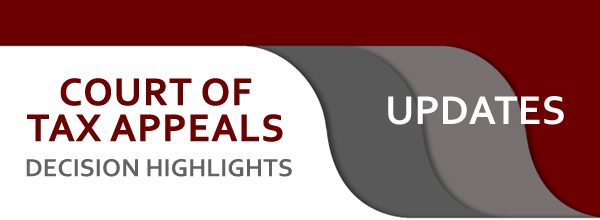
The ICPA's findings and conclusions are not conclusive upon the Court.
In its motion for reconsideration of the CTA en Banc's Decision, taxpayer insists that it presented sufficient evidence to prove that its services were performed in the Philippines, citing the Independent Certified Public Accountant (ICPA) Report. It further stressed that ICPA Report should be considered and given probative value by the Court in support of its claim for refund.
In denying the Motion for Reconsideration, the CTA en banc held that the ICPA was commissioned as an officer of the Court for the purpose of performing audit functions, and not as an expert witness. Besides, even if the ICPA was presented and qualified as an expert witness, this does not mean that the Court is bound by the ICPA's testimony. The ICPA's findings and conclusions are not conclusive upon the Court. The ICPA's findings and conclusions are subject to the Court's verification, to determine their accuracy, veracity and merit. The Court may either adopt or reject the ICPA Report, wholly or partially, depending on the outcome of its own independent verification. (Procter & Gamble Asia Pte. Ltd. V. CIR, CTA EB No. 2301 (May 25, 2022)
A period of five (5) years for tax collection should still be considered to apply to regular assessments given that Section 222 of the NIRC of 1997, as amended, has extended the applicability of the 5-year period even in circumstances where fraud is absent.
Taxpayer's prior Petition for Review filed with the Court in Division was mainly grounded on CIR's supposed prescribed action (of collection) against it. Taxpayer did not raise any issue on the invalidity of CIR's assessment but sought refund of the taxes it paid under protest on such ground.
The CTA en banc ruled that a period of five (5) years for tax collection should still be considered to apply to regular assessments given that Section 222 of the NIRC of 1997, as amended, has extended the applicability of the 5-year period even in circumstances where fraud is absent as evinced (more particularly) by Section 222(d) of the same Tax Code.
Here, the records show that respondent-Company received the FAN on 14 January 2010. From then on, petitioner-CIR would have five (5) years or until 14 January 2015 to collect respondent's alleged tax deficiencies through distraint, levy, or a collection suit instituted before this Court. However, petitioner took no action to collect from respondent within the said 5-year period. As the records clearly show, respondent received the FDDA, PCL, and FNBS only on 13 May 2016, 03 May 2016, and 16 May 2016, respectively, or more than a year after the end of the 5-year prescribed period. Hence, a refund to respondent is in order as petitioner's right to collect had indubitably prescribed. (Commissioner Of Internal Revenue v. Sunnyphil Incorporated, CTA EB NO. 2232, May 24, 2022)
RR No. 2-2006 merely imposes, among others, a penalty of fine for non-submission of the information or statement required therein, but not the outright denial of a claim for tax refund or credit.
The CTA En Banc ruled that RR No. 2-2006 prescribes the mandatory attachments of the SAWT to tax returns with claimed tax credits due to Creditable Tax Withheld at Source and of the MAP whose income received have been subjected to withholding tax to the withholding tax remittance return filed by the withholding agent/payor of income payments. RR No. 2-2006 merely imposes, among others, a penalty of fine for non-submission of the information or statement required therein, but not the outright denial of a claim for tax refund or credit. Therefore, there is no legal basis for the CIR to insist that the alleged non-submission of SAWT and MAP should result in the denial of taxpayer's claim for tax refund or credit. (CIR v. Sonoma Services, Inc., CTA EB No. 2467, May 24, 2022)
The CTA is not limited by the evidence presented in the administrative claim in the Bureau of Internal Revenue. The claimant may present new and additional evidence to the CTA to support its case for tax refund.
The Court promulgated a Decision partially granting taxpayer's claim for refund of unutilized input value-added tax (VAT) attributable to its zero-rated export sales for the third (3rd) quarter of fiscal year 2016. In his Motion, CIR primarily argues that the Court erred in ruling that the law does not require that the input VAT subject of the claim be directly attributable to zero-rated sales. CIR further asserts that taxpayer's claim for refund must be denied due to its failure to substantiate the same in the administrative level.
The CTA- First Division finds taxpayer's Motion for Partial Reconsideration bereft of merit. It ruled that the Court is not only confined to the determination of whether or not the denial of the subject claim in the administrative level is proper. The paramount consideration remains the ascertainment of truth. Thus, the CTA is not limited by the evidence presented in the administrative claim in the Bureau of Internal Revenue. The claimant may present new and additional evidence to the CTA to support its case for tax refund. (Orica Philippines, Inc. v. Commissioner of Internal Revenue, CTA EB NO. 9974, May 24, 2022)
Only those engaged in zero-rated or effectively zero-rated sales can apply for input VAT refund.
Taxpayer is exempt from VAT as a result of it being a PAGCOR licensee. The extension of the VAT exemption to PAGCOR's licensees is to ensure that no VAT can be passed on to PAGCOR.
The CTA ruled that VAT exemption of the taxpayer does not automatically mean that its sales are subject to VAT zero-rating. VAT zero-rating is different from VAT exemption. Being VAT exempt means that no VAT, either the twelve percent (12%) or the zero-percent (0%) rate, is imposed at all for the subject sales transaction. On the other hand, engaging in VAT zero-rated transactions means that a sale is subjected to the zero percent (0%) VAT rate.
In the instant case, the records are bereft of any showing that taxpayer is engaged in zero-rated or effectively zero-rated transactions, as provided under Sections 106 (A) (2) and 108 (B) of the NIRC. As taxpayer is simply VAT exempt and has not been shown to be engaged in any of the zero-rated or effectively zero-rated transactions, it cannot claim refund of its input VAT. (Melco Resorts Leisure v. CIR, CTA CASE NOS. 9582, 9667 & 9724, May 23, 2022)
Administrative claims filed on or after June 2014 must follow the requirements set forth in RMC No. 54-2014. The current rule now forbids the submission of additional documents after the filing of the administrative claim.
Taxpayer filed its administrative claim for refund or tax credit on 27 September 2018. Subsequently, the BIR received the original copies of the official receipts or invoices and other documents in support of taxpayer’s administrative claim on 22 October 2018. The CIR argued that he had 90 days (previously 120 days) from 27 September 2018, or until 26 December 2018, to act on taxpayer's claim. Since CIR did not act on the claim, taxpayer had 30 days after the expiration of the 90-day (previous or from 27 December 2018 to 25 January 2019, within which to file its judicial claim. However, the Petition for Review was belatedly filed only on 19 February 2019.
The CTA held that under the current rule, the reckoning of the 120-day (now 90-day) period has been withdrawn from the taxpayer by RMC 54-2014. Since it requires him at the time he files his claim to complete his supporting documents and attest that he will no longer submit any other document to prove his claim. Further, the taxpayer is barred from submitting additional documents after he has filed his administrative claim.
The above standing rule is consistent with the Supreme Court's declaration in the recent case of Zuellig-Pharma Asia Pacific Ltd. Phils. ROQH v. Commissioner of Internal Revenue (Zuellig-Pharma), declaring that "the prevailing rule now is that all complete documents are to be submitted upon the filing of the taxpayer's administrative claim for refund". (Mitsuba Philippines Technical Center Corporation v. CIR, CTA Case No. 10025, May 19, 2022)
The Amended Decision is an entirely new decision which supersedes the original decision, for which a new motion for reconsideration may be filed again.
Taxpayer and CIR filed their respective Motion for Partial Reconsideration which were partially granted by the CTA Division in an Amended Decision. Both parties then filed their respective Petitions for Review with the CTA En Banc. The issue is whether or not the parties were correct to file their Petitions for Review before the Court En Banc, without filing a prior motion for reconsideration of the Amended Decision.
The Court En Banc held that as long as an amended decision was issued by the court a quo, a litigant planning to file an appeal with the Court En Banc must necessarily file a motion for reconsideration or new trial first, even though one or both litigants already filed a motion for reconsideration to the original decision. Such amended decision is considered a new or different decision which therefore calls for the filing of another motion for reconsideration or new trial, before appeal to the CTA En Banc may be made.
In the recent case of Commissioner of Internal Revenue v. Commission on Election, the Supreme Court categorically defined an amended decision as a decision which is based on a reevaluation of the parties' allegations or reconsideration of new and/or existing evidence that were not considered and/ or previously rejected in the original decision. An amended decision is different from an amended decision which is a mere clarification, one that does not need a motion for reconsideration or new trial before filing a petition for review with the Court En Banc. Here, both parties should have filed their respective motions for reconsideration of the Assailed Amended Decision before they filed their respective Petitions for Review before the Court En Banc. (Ayala Corporation v. CIR, CTA EB Nos. 2417 & 2418 (CTA Case No. 9556), May 18, 2022)
The requisites that the tax withheld was included as part of the gross income and is evidence by a copy of a certificate is not required in a claim for refund of erroneously paid CWT.
The taxpayer filed a claim for refund of creditable withholding tax (“CWT”), interest surcharge and compromise penalty arising from its acquisition of a property from the Tourism Infrastructure and Enterprise Zone Authority (“TIEZA”) pursuant to Section 74 of R.A. 9593. On the other hand, the CIR alleged that the taxpayer is not entitled to the said refund for its failure to prove its compliance with the following requisites: (i) the income from which the tax was withheld was included as part of the gross income; and (ii) the fact of withholding must be evidenced by a copy of the statement duly issued by the payor to the payee.
In ruling in favor of the taxpayer, the Court ruled that the above requirements are vital only for claims of refund of excess income tax payments or excess CWT under Section 76 of the Tax Code, as amended, and not to a claim for refund of CWT which should not have been remitted to the BIR in the first place. (Premier Central, Inc. vs. Commissioner of Internal Revenue, CTA Case No. 10251, May 16, 2022)
An audit investigation of the taxpayer cannot ordinarily be undertaken without a valid LOA even if it is conducted by the OCIR.
The LOA in this case was issued by the OlC-Assistant Commissioner for Large Taxpayers Service. In the organizational chart of the BIR, the LTS is under the Office of the CIR (OCIR). According to the CIR, since the audit investigation was conducted by LTS under the OCIR, the issuance of the LOA is not a statutory requirement and that the LOA issued by the LTS is merely for administrative purposes to allow keeping track of ongoing assessments. Thus, it is irrelevant, with or without LOA, under OCIR, as Section 6(A) of the NIRC of 1997, as amended, provides for inherent function to CIR and his authorized representative to authorize the examination of all taxpayers. The CIR further argued that an LOA in Section 13 of the Tax Code, as amended applies to Revenue Officers in Revenue District Offices.
The Court En Banc upheld the ruling of the Court in Division. It ruled that Section 6(A) of the Tax Code is clear that unless authorized by the CIR himself or his duly authorized representative, through a LOA, an examination of the taxpayer cannot ordinarily be undertaken. The CIR’s claim that the issuance of an LOA issued by the OIC-Assistant Commissioner for Large Taxpayers Service under the OCIR is not a statutory requirement and merely for administrative purposes to allow keeping track of ongoing assessments, has no leg to stand on. (Commissioner of Internal Revenue vs. Watsons Personal Care Stores (Philippines), Inc., CTA CEB No. 2391 [CTA Case No. 9303], May 13, 2022)
A compromise agreement at a rate less than the 40% is justified when there is a prior written request and the agreement was reached after a decision declaring the assessment void.
The CIR and the taxpayer entered into a compromise agreement. The taxpayer’s offer is only P517,059.72 or 15% of the basic tax assessed amounting to P3,447,064.80, which is less that the prescribed minimum rate of 40% for cases grounded on doubtful validity.
In approving the compromise agreement between the CIR and the taxpayer, the Court ruled that even if the taxpayer’s offer is less than the prescribed minimum rate of 40%, the taxpayer has substantially complied with Section 4 of RR No. 30-2002 which provides that the taxpayer shall submit his request for compromise in writing stating therein the reasons why he should be entitled to a lower rate.
The taxpayer here submitted proof of its prior written offer as a sign of good faith and with the aim of putting an end to the litigation of the subject case. Moreover, it also justified the use of a lower rate of 15% considering that the parties reached the agreement after the promulgation of the assailed Decision granting its prior Petition for Review and declaring the assessment null and void. (Commissioner of Internal Revenue vs. Jones Lang Lasalle (Philippines), Inc., CTA EB No. 2362, [CTA Case No. 9590], May 13, 2022)
The determination of the validity of a WDL issued by the CIR falls under the "other matters" jurisdiction of this Court.
CIR asserts that the Court in Division erred in declaring the nullity of the assessment and setting aside the WDL given that both the FLD and the WDL have already became final and executory due to respondent's failure to seasonably file a protest against the FLD or an appeal against the WDL before this Court. Petitioner also emphasizes that what was appealed before this Court in the present case is the Notice of Denial of respondent's Offer of Compromise.
The CTA, citing Philippine Journalists, Inc. v. Commissioner of lnternal Revenue, ruled for the CIR. In the said case, the Supreme Court clarified that the determination of the validity of a WDL issued by the CIR falls under the "other matters" jurisdiction of this Court. In the present case, however, respondent failed to file an appeal to question the validity of the WDL dated October 22, 2013 which it received the same on even date. Instead of filing a Petition for Review before this Court, respondent merely filed an Offer of Compromise on May 2, 2014 before the BIR, more than six (6) months after it received the WDL. As a consequence, the WDL attained finality and this Court was divested of any authority to review the validity thereof. (Commissioner of Internal Revenue vs. New Farmers Plaza, Inc., CTA EB No. 2290, May 6, 2022)
Joinder of causes of action is permissible under the rules subject to certain requisites.
A taxpayer filed a judicial protest before the Court of Tax Appeals assailing two (2) FDDAs in one Petition for Review. The CIR argued that the filing of two (2) FDDA is one Petition for Review is an erroneous misapplication of the Court’s jurisdiction over decisions of the CIR.
The CTA ruled for the taxpayer. Under Section 5, Rule 2 of the Rules of Court, a party may, in one pleading assert, in the alternative or otherwise, as many causes of action as he may have against an opposing party, subject to conditions. In Spouses Perez v. Hermano, the Supreme Court laid down the requisites for a valid joinder of causes of action, to wit: (a) it will not violate the rules on jurisdiction, venue and joinder of parties; and (b) the causes of action arise out of the same contract, transaction or relation between parties, or are for demands for money or are of the same nature and character. Here, although two (2) FDDAs are assailed in the instant Petition for Review, the relation between the two (2) FDDAs are readily apparent. These FDDAs pertain to petitioner's alleged deficiency taxes; are of the same nature and present a common question of fact or law that would warrant their joinder. To the mind of the court, assailing both FDDAs in the instant Petition does not run counter to the rules on joinder of causes of action. Thus, instant Petition deserves merit. (Pepsi-Cola Products Philippines, Inc. vs. Commissioner of Internal Revenue, CTA Case No. 9170, May 6, 2022)

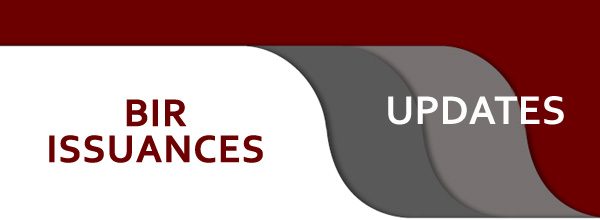
RMC No. 71-2022,
May 18, 2022
This circularizes the Guidelines on the Provision of the Mandatory Statutory Benefits and Privileges of the Senior Citizens and Persons with Disabilities on their Purchases through Online (e-Commerce) and Phone Call/SMS."
E-Commerce Purchases through the internet or online platform:
- The Senior Citizen (“SC”) or Person with Disability (“PWD”) must, prior to placement of order, declare to the online platform/merchant that he/she is a Senior Citizen or a Person with Disability.
- Upon confirmation of order/s, the SC or PWD must provide/attach a scanned copy/screenshot or image of his/her lD.
- Upon delivery of the goods/orders or performance of the service purchased through the online platform the SC or the PWD, or his/her duly authorized representative, shall present the original copy of the SC or the PWD proof of entitlement together with the authorization letter, if applicable.
Purchases through the telephone or mobile phone call:
- The SC or PWD must upon placement of order provide his/her name, date of birth, and the lD number as proof of discount entitlement.
- The business establishment shall exert effort and ask the customer if he/she is a SC and/or PWD.
- After completing the order, the business establishment shall apply the appropriate discount to the price of the goods or services for the consumption of the SC or PWD.
- Upon delivery of the goods/orders or performance of the service, the SC or PWD must present his/her SC or PWD proof of entitlement together with the authorization letter, if applicable, to the business establishment representative or its third-party service provider.
Pick-up of goods purchased through e-commerce or phone/mobile:
- ln cases where the business establishment or third-party service provider offers a "pick-up" option on purchased goods, the business establishment and the thirdparty service provider shall charge the SC and PWD the discounted price. Provided that, these goods were purchased through the means covered in the JMC, Provided finally, that in case the payment of the goods will be done physically and directly to the business establishment, the amount charged must be discounted in accordance with the existing BIR rules.
RMC No. 76-2022,
May 30, 2022
This provides for the suspension of audit and other field operations pursuant to, and under authority of, all task forces created thru revenue special orders, operations memoranda and other similar orders / directives.
Coverage and effect
| Coverage of Suspension until Further Notice | All field audit and other field operations pursuant to, and under authority of, all Task Forces, created thru Revenue Special Orders (“RSOs”), Operation Memoranda (“OM”) and other similar orders or directives, relative to examinations and verifications of taxpayers' books of account, records, and other transactions. |
| Effect of the suspension |
No field audit, field operations, or any form of business visitation in execution of Letters of Authority/Audit Notices (“LOAs”) or Mission Orders (“Mos”) should be conducted by the said Task Forces. No written orders to audit and/or investigate taxpayers' internal revenue tax liabilities shall be issued and/or served pursuant to, and under authority, of said Task Forces. |

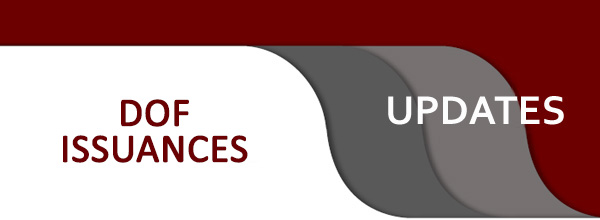
DOF Opinion No. 006-2022
The application of Section 100 of the NIRC is obtaining only in the situation where a tax is sought to be avoided by the parties to a sale.
Mitsubishi Heavy Industries, Ltd. (“MHI”) and Mitsubishi Hitachi Power Systems, Ltd. (“MHPS”) are both foreign corporations organized and existing under the laws of Japan. MHI Technical Services Corporation (“MTSC”) is a domestic corporation that is 100%-owned by MHI. MHI transferred its share in MTSC to MHPS. In exchange, MHPS issued 682 common shares to MHI for a 65% ownership in the former. The BIR issued the ITAD Ruling No. 041-21, ruling that the gains realized by MHI are not subject to income tax under the Philippines-Japan Tax Treaty (“RP-Japan Treaty”). However, MHI is liable for a 30% donor’s tax under Section 100 in relation to Section 99(B) of the NIRC since the FMV of MTSC’s shares is higher than the FMV of the 682 MHPS common shares received by MHI.
The DOF ruled that there is no donor’s tax in the transfer of MHI of its MTSC shares of stock to MHPS, as under the TRAIN Law, Section 100 was amended to reflect the intention of recognizing transactions, which are bona fide at arm’s length and free from any donative intent. The application of Section 100 is obtaining only in the situation where a tax is sought to be avoided by the parties to a sale. In this case, the DOF found that because the BIR ruled the capital gains derived by MHI is exempt from income tax under the RP-Japan Treaty, MHI could not have intended to avoid the income tax due on the transfer as any gain derived from the transfer is covered by the exemption.
DOF Opinion No. 008-2022, May 11, 2022
Registration as a non-stock and non-profit corporation does not automatically exempt a subject corporation from income tax under Section 30 of the NIRC.
Independent Electricity Market Operator (“IEMOP”) represents itself as a non-stock, non-profit business league engaged in the management and operation of the market for the wholesale purchase of electricity and ancillary services in the Philippines (Wholesale Electricity Spot Market or “WESM”). Acting on IEMOP’s request for confirmation of its tax status, the BIR issued BIR Ruling No. OT-323-021, finding that IEMOP cannot qualify as an income-tax exempt business league under Section 30(F) considering the nature and purposes of its incorporation.
The DOF found that IEMOP is not an income-tax exempt business league under Section 30(F) of the NIRC. RR 02-40 and RMO 34-2019 defines and characterizes business leagues as an association of persons having some common interest, which limits its activities to work for such common interest. From this definition, IEMOP cannot qualify as a business league considering the nature and purposes of its incorporation. It is very clear that the various market participants, while all registered as WESM members, cannot be said to have a common business interest with IEMOP or the other market players. The primordial reason for their registration for membership is for them to access electricity in the WESM. Moreover, registration as a non-stock and non-profit corporation does not automatically exempt a subject corporation from income tax under Section 30 of the NIRC. A corporation has to meet the specific conditions based on the corporate purpose and actual operations under each item of Section 30 to be exempt.
DOF Opinion No. 009-2022, May 16, 2022
The shareholders of the absorbed corporation keep the capital gains tax or losses on the transfer as unrealized upon receipt of the new shares from the surviving corporation. Only upon subsequent transfer of subject shares shall income tax be imposed on capital gains, if any.
The BIR issued Ruling No. S40M-017-2022 confirming the statutory merger between Toyota Cubao Incorporated (“TCI”), as the absorbed corporation, and Toyota Manila Bay Corporation (“TMBC”), as the surviving corporation, is a tax free transfer/exchange pursuant to Section 40(C)(2) off the NIRC, but found that the unrestricted retained earnings of TCI are subject to the final withholding tax on dividends constructively received by its shareholders.
The DOF found that the BIR made a reversible error when it declared that the unrestricted retained earnings of the absorbed corporation in a tax-free merger is subject to final withholding tax on dividends. When all the assets and liabilities of the absorbed corporation TCI are transferred to the surviving corporation TMBC, solely in exchange for shares of stocks, this necessarily includes all the accumulated earnings outstanding in the books of the absorbed corporation as of the time of the merger. The retained earnings of TCI are considered in determining the number of shares to be issued by TMBC. The shareholder of TCI will then receive the shares of TMBC in exchange for their shares in TCI which ceased to exist by operation of law. The shareholders of the absorbed corporation keep the capital gains tax or losses on the transfer as unrealized upon receipt of the new shares from the surviving corporation. Only upon subsequent transfer of subject shares shall income tax be imposed on capital gains, if any.


BSP Memoranda
No. M-22-026 dated May 24, 2022
This provides for the Suspension of Electronic Sabong (eSabong).
Pursuant to the Memorandum of the Executive Secretary dated 03 May 2022, all BSFIs are hereby directed to refrain from facilitating eSabong transactions by implementing the following:
a. Delist eSabong entity/operators in the list of merchants accessible in the BSFIs application (i.e. mobile, internet, etc.)
b. Given the possibility of accountholders with remaining funds in its eSabong accounts sourced from their e-wallet accounts, the BSFI should advise affected clients to cash out funds from their eSabong accounts to their e-wallet accounts within thirty (30) calendar days from the issuance of this memorandum. The BSFI should issue a notification to their customers and the merchant/eSabong operator regarding this transitory requirement.
c. After the lapse of the 30-day transitory period, the linkage of e-money wallet to eSabong account should be disabled in the system including the merchant/eSabong operator account.
BSFIs shall deal only with gambling and/or online gaming business that are authorized/icensed or registered with the appropriate government agency duly empowered by law or its charter to license/authorize entities or business to engage in such activities. Hence, it must be further clarified that, this excludes eSabong operators - the operations of which have been suspended upon order by the President.
BSFIs shall strictly observe the requirements under Part 9 of the Manual of Regulations (MOR) for Banks and MOR for Non-Bank Financial Institutions, particularly on customer due diligence, ongoing monitoring of accounts and transactions, reporting of suspicious transactions, and ensure that appropriate control measures are in place to restrict to restrict access of mjnors, government employees and other prohibited players on these online gambling facilities.


FIRB Advisory dated May 13, 1996
This Advisory provide for the Frequently Asked Questions on the Fiscal Incentives Registration and Monitoring System (FIRMS), Annual Tax Incentives Report (ATIR) and Annual Benefits Reports (ABR)
- A single/individual user can have multiple accounts, provided that there are unique email addresses provided per account per legal entity/Tax Identification Number (TIN).
- FIRMS observes a one-to-one relationship between a user account and the corresponding TIN. This means that a FIRMS account is uniquely identified to a single TIN (regardless of branch code). However, we emphasize that one account can register multiple projects housed under one legal entity/one TIN.
- For the purpose of filling-out Form B in FIRMS, the start date of tax incentives for projects/activities shall refer to the date when the RBE first availed of the specific tax incentive based on its initial and original registration with the IPA. However, the reckoning period of the transitory provision under Section 311 of the Tax Code is the effectivity date of the CREATE Act, which is April 11, 2021.
- Locators entitled to and will be availing of tax incentives for the year are required to apply for the CETI from the IPA. For this year’s tax filing (covering the taxable year 2021), the existing Certificate of Registration (COR) or Certificate of Registration and Tax Exemption (CRTE) or other similar registration documents shall be allowed.
- For the taxable year 2021, the Bureau of Internal Revenue (BIR) accepts the official issuances of the IPAs (such as the CRTE or COR) as proof of the RBEs’ entitlements. Moving forward, the BIR will be requiring the Certifcate of Entitlement to Tax Incentives (CETI).
- CREATE incentives can be availed by new and existing enterprises, as long as the project or activity to be registered is listed in the Strategic Investment Priority Plan (SIPP). However, for existing enterprises, incentives may be granted only to qualified expansions or entirely new projects.
- A BOI-registered company only entitled to local tax exemption is still required to register under FIRMS. FIRMS will serve as a centralized portal for approving and monitoring tax incentives and will be used to enroll existing and prospective RBEs.
- Under the CREATE Act, the FIRB will decide on applications for tax incentives for projects or activities with investment capital of more than PHP 1 billion. Approval of projects or activities with investment capital of PHP 1 billion and below are delegated to the IPAs.

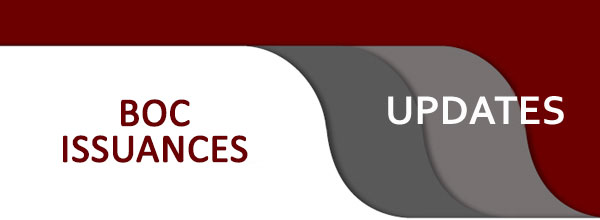
CAO No. 02-2022 dated March 28, 2022
This Customs Administrative Order (CAO) implements the ATA Carnet System in the Philippines in accordance with the 1990 World Customs Organization (WCO) Convention on Temporary Admission (Istanbul Convention).
This CAO covers the importation or exportation of conditionally duty and tax-free goods which are included in the Annexes to the Istanbul Convention and acceded to by the Philippines using ATA Carnets.
The ATA Carnet refers to the Temporary Admission Papers used for the Temporary Admission of goods, excluding means of transport. The ATA System allows the free movement of goods across frontiers and their temporary admission into a customs territory with relief from duties and taxes.
Importation of goods shall be granted Temporary Admission subject to the following conditions: (1) the goods, including means of transport) must be imported for a specific purpose; (2) the goods must be intended for re-exportation within the minimum period specified under the Istanbul Convention; and (3) the goods shall not undergo any change except normal depreciation due to the use made of them.
The Bureau shall accept, in lieu of the regular SAD or Informal Declaration and Entry (BOC Form no. 177), a validly issued ATA Carnet as a Goods Declaration for goods temporarily imported into the country and covered under the CAO.
AOCG Memo No. 156-2022
dated April 25, 2022
This AOCG Memo reiterates to all CBW Operators to comply with the standard template of certificate of clearance.
It is reiterated that all CBWs shall comply with the standard template of Certificate of Clearance affixing signatories from the office of CIIS, Bonds Division, Law Division, Collection Division, Assessment Division, Liquidation and Billing Division, CBW Division and Office of the District Collector of the port concerned issued within three (3) months immediately preceding the filing.
CMC No. 58-2022 dated May 2, 2022
This is a PEZA Resolution regarding the return to the Work-From-Home (WFH) policy adopted by PEZA.
The following guidelines shall be observed:
- From 01 April 2022 to 12 September 2022, the WFH arrangement may be granted to all kinds of RBEs, whether registered before or after the effectivity of the CREATE Act, as a BCP measure due to the Covid-19 Pandemic.
From 13 September 2022 and onwards, the WFH arrangement shall then be granted to all kinds of RBEs registered prior to the effectivity of the CREATE Act only, in recognition of the sunset provision of the said law. On the other hand, RBEs registered after the effectivity of the CREATE Act shall be fully covered by the terms and conditions for the availment of the incentives under the said law. Nevertheless, the same WFH policy may be extended to the RBEs registered under the CREATE Act subject to the confirmation by the Board of Investments (BOI) through inclusion in the Strategic Investment Priority Plan (SIPP) or any enabling laws and regulations. - Pursuant to the sunset provision of the CREATE Act, an RBE shall continue to be entitled to its granted fiscal and non-fiscal incentives prior to the effectivity of the said law. Further, the terms and conditions for the availment of the incentives shall continue to be covered by the Registration Agreement of the RBE with PEZA for the said project. Furthermore, the corresponding PEZA policies for the availment of the incentives shall be the ones in force during the execution of the Registration Agreement for the said project.
- Management shall issue a WFH Letter of Authority (LOA) on a case-to-case basis.
- The percentage threshold of the workforce to undergo WFH arrangement should not exceed 30% of the total workforce of an RBE on all its registered sites.
- If an RBE exceeds the 30% WFH workforce threshold, its entitlement to incentives may be revoked pursuant to the applicable provisions of the CREATE Act.

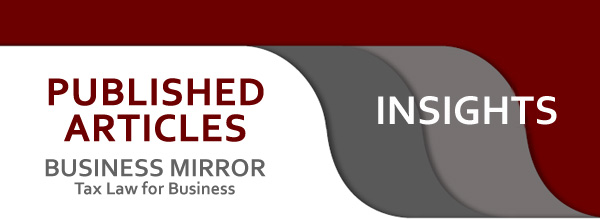
Deductible Costs and Expenses,
No Requirement for Allocation
By Atty. Fulvio D. Dawilan
Recall that in March of 2011, the Department of Finance issued Revenue Regulations No. 04-11 (RR 04-11), which required the allocation of costs and expenses of banks and other financial institutions. This was declared void by the Supreme Court in G.R. Nos. 240163 and 240168-69, December 1, 2021.
Note that banks are generally subject to the regular corporate income tax on the results of operations of the regular banking units. However, the expanded foreign currency deposit units are either exempted from tax or subject to the preferential income tax rate of 10%, depending on the nature and source of income. Similarly, other financial institutions earn income that are subject to the regular corporate income tax, exempt from tax or subject to the final taxes. These tax-exempt income, income taxed at the preferential tax rate, or subject to the final taxes (often referred to as tax-paid income) are not included in the computation of income subject to the regular corporate income tax, obviously because they have different tax treatment. RR 04-11 sought to exclude the costs and expenses allocated to these income as deductions in the computation of the regular corporate income tax, by making allocations. In other words, costs and expenses attributable to the income of foreign currency deposit units and to the tax-exempt and tax-paid income of financial institutions were treated by the regulations as non-deductible in computing regular corporate income tax.
The tax impact of the Court decision for banks and other financial institutions is clear, as they are the subject of RR 04-11 which was declared void. They need not resort to the allocation of their costs and expenses among their different income streams, in determining which costs and expenses are deductible.
What about taxpayers in other industries which are not the subject of RR 04-11 – taxpayers other need not exclude cost and expenses attributable to income exempt from tax or income subjected to final taxes?
Apparently, this had become the practice of tax examiners - to allocate costs and expenses to income subjected to final taxes or exempt from taxes, and exclude such costs and expenses as deductions in the computation of regular income taxes. Examples of these are costs and expenses allocated to income subject to capital gains tax and to investment income subjected to final taxes, on the pretext that costs and expenses are also necessarily incurred to earn these income. Is this correct?
While the Court decision involves taxpayers in the banking and other financial sector, I believe the pronouncements in the decision and reasons mentioned in invalidating the regulations benefit taxpayers in general. Let me further explain one of them.
The Tax Code concedes to the basic rule that all ordinary and necessary expenses paid or incurred in carrying on, or which are directly attributable to the development, management, operation and/or conduct of trade or business shall be allowed as deduction. Citing this provision, the Court noted that common expenses should be deductible in full against the income subject to regular tax. The Court further explained that as the provision of the Tax Code is worded, all expenses are deducted directly and in full without any allocation or attribution between the different income streams. There is no requirement to allocate the common expenses to income subject to final withholding taxes or exempt income. There is no distinction for common expenses among income streams, as these are, after all, common expenses. Thus, there can be no allocation of expenses between different incomes in the same trade or business unit.
Indeed, as the Court explained, the imposition of allocation rules inevitably impairs the right of the taxpayers to claim deductions. The allocation and the consequent non-deduction of portions of expenses is an imposition of additional requirement not provided in the law. To do so would be limiting, modifying and qualifying the otherwise permissible deductions allowed under the Tax Code.
The verdict is clear – an item of cost or expense cannot be excluded as deduction in the computation of the regular income tax, simply on the basis that it is allocated or attributable to income exempt from tax, income subject to final tax, or income subject to preferential tax. In the first place, the law provides no requirement for allocation. Thus, all items of expenses, as long as they comply with all the other requisites for a valid expense, should be allowed as deduction in computing the income subject to the regular corporate income tax. The practice, therefore, of some revenue examiners in excluding portions of costs and expenses as deductions is without basis.
To summarize, the Supreme Court invalidated RR 04-11, the regulations requiring the allocation of costs and expenses incurred by banks and other financial institutions, and effectively allowing only the expenses attributed to income subject to regular income tax as deductions. Banks and other financial institutions should therefore be able to deduct all ordinary costs and expenses, without resorting to allocation. I believe the same rule should apply to any taxpayer. Attributing expenses to exempt income and income subjected to final taxes and excluding them as deduction are without basis.
----------------------------------------------
For inquiries on the article, you may call or email
ATTY. FULVIO D. DAWILAN
Managing Partner
T: +63 2 8403 2001 loc. 310
This email address is being protected from spambots. You need JavaScript enabled to view it.

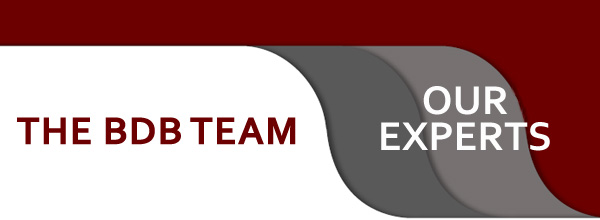
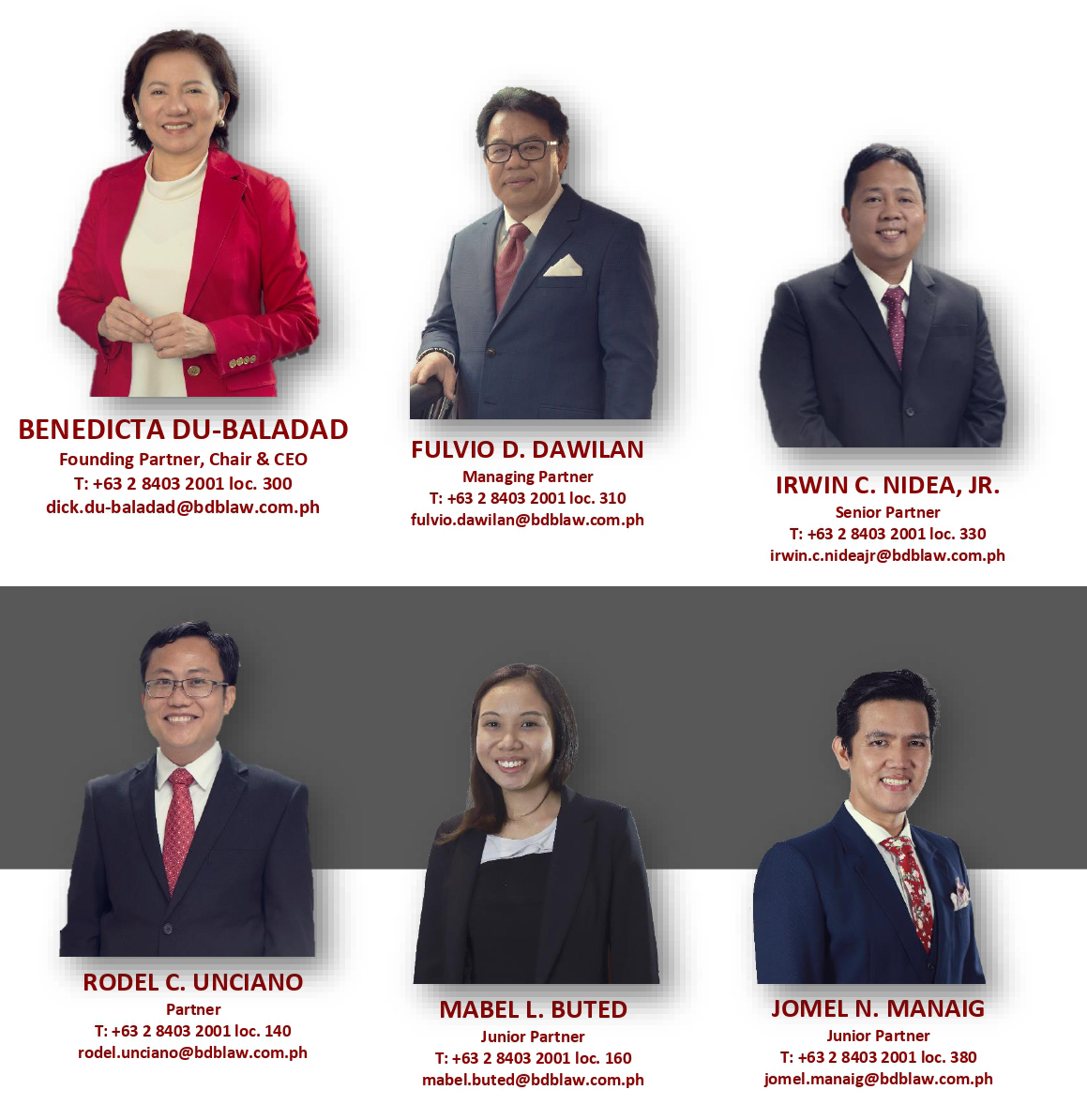
DISCLAIMER: The contents of this Insights are summaries of selected issuances from various government agencies, Court decisions and articles written by our experts. They are intended for guidance only and as such should not be regarded as a substitute for professional advice.
Copyright © 2022 by Du-Baladad and Associates (BDB Law). All rights reserved. No part of this issue covered by this copyright may be produced and/or used in any form or by any means – graphic, electronic and mechanical without the written permission of the publisher.





